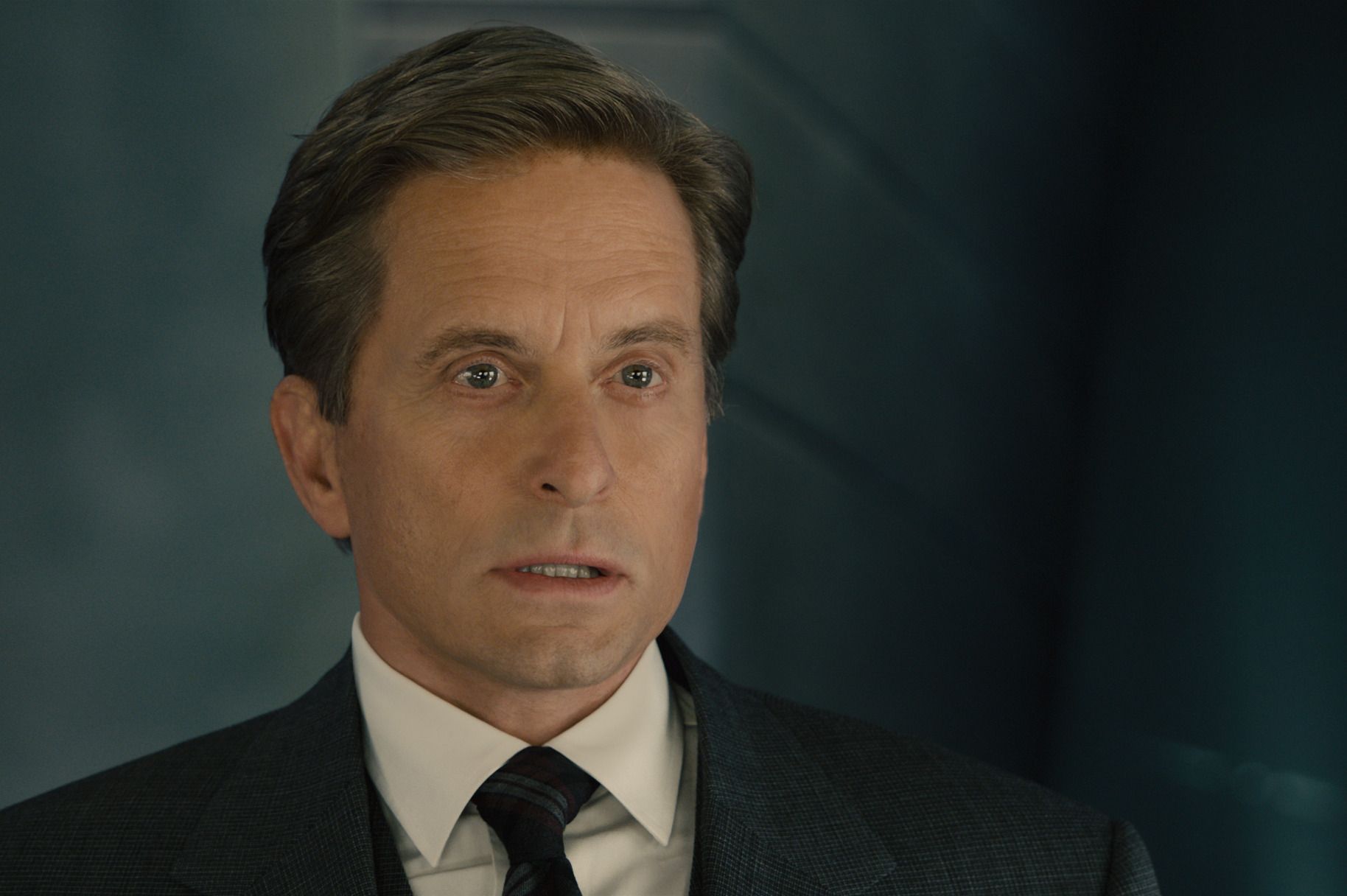The opening scene of Marvel's Ant-Man features a scene from several decades earlier, where Hank Pym (Michael Douglas) is seen meeting with Howard Stark (John Slattery) and Mitchell Carson (Martin Donovan) to resign from S.H.I.E.L.D. in the year 1989. This meeting helps set in motion the primary, present-day story, but those who have seen the superhero movie in theaters may still be scratching their heads over how young Michael Douglas looked in this scene. Vulture spoke with one of the men responsible for this "de-aging" process, Trent Claus, whose company Lola VFX specializes in "visual cosmetics" that can make any actor, "older, younger, thinner [or] fatter."
Lola VFX was put on the map from their work in David Fincher's The Curious Case of Benjamin Button, where they "de-aged" Brad Pitt and Cate Blanchett's characters. They also created the much skinnier version of Chris Evans' Steve Rogers in 2011's Captain America: The First Avenger. Trent Claus revealed that Marvel brought the company in fairly early in the process on Ant-Man.
"They asked for advice for what they could do when they were shooting that could aid us, which is very much appreciated. We put our two cents in, and they did everything we needed right from the start."
The company requested that no anti-aging makeup be used on Michael Douglas, since it "messes with the way light works on the face," and had a younger stand-in for the actor as a reference point for the way "young skin" looked on the set. The company also used several of the actor's films from that era as reference to what he looked like in 1989. However, Trent Claus revealed that was also somewhat of a curse, since the audience is familiar with how he looked like at that time. Here's what the VFX artist had to say.
"It helped us a lot to have that reference, but it made us work harder, because the audience already knew what he looked like at that age. There wasn't a whole lot of leeway."
Trent Claus added that they heavily referenced the actor's critically-acclaimed 1987 classic Wall Street for their de-aging work. The artists used a digital composites to create this "digital face-lift," and their work is quite similar to how an actual plastic surgeon may work. Trent Claus went on to say that they looked at the way the actor's face moves as he speaks, paying particular attention to the Adam's Apple area.
"What's really important is the way his face moves as he speaks, the way that the muscles in the face have changed over time, the way the skin reacts to those muscles. To sell the effect you have to look at the way [the face] looks in motion. The most obvious thing is that the skin along the jaw in most people tends to get lower and lower and sag a little bit as you get older. Particularly around the throat and the Adam's Apple area, you'll get a build-up of extra skin down there. One thing we'll have to do to de-age someone is restore that elasticity and try to not only to remove the excess skin, but pull it back up to where it once was."
Lola VFX first got into de-aging work for 20th Century Fox's X-Men: The Last Stand nearly 10 years ago, but Trent Claus said that they have had the same basic tools for "decades," and it's the artists' skills and experience that have improved over the years. Take a look at a photo of the de-aged Michael Douglas from the opening scene of Ant-Man below. What do you think about this digital de-aging process?

